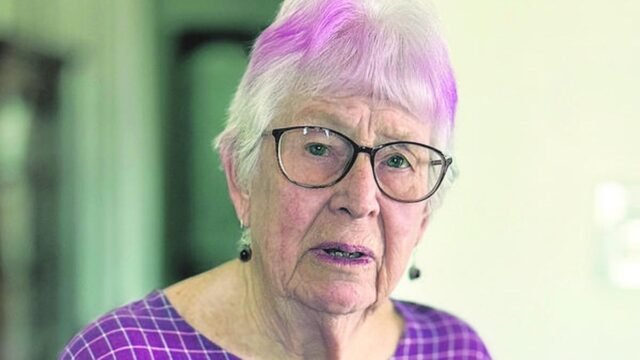She is the grand dame of Hyderabad’s history, having covered a vast arc of the evolution of the city, its culture, religious practices, architecture and diaspora. Beginning by puttering around in Himayatnagar on her scooter with her two kids during the 60s, historian and anthropologist Karen Isaksen Leonard is back with her daughter and granddaughter in Hyderabad, the city where she researched and wrote multiple books. Worried about the six cats at her home in Los Angeles, she talks about her multiple visits to Hyderabad. Between reminiscences of her past work, her books, life in Hyderabad and social graces, she shares her worldview.
How did your journey into the history of Hyderabad begin?
I came to India as an exchange student from the University of Wisconsin. I was studying in the Miranda House. I had already taken a course in Hindi at the university. We travelled around India for a month at the end of the school year. We first came by train to Hyderabad in May and then stayed in Nampally Serai. It was so hot we moved our cots out. However, I liked Hyderabad and wanted to pursue research here as my husband, John Leonard, was doing research on Veereslingam Pantulu.
Why did you choose one caste as the subject of your research?
I was a civil rights activist at the University of Wisconsin. And I wasn’t very interested in the Nizam or the nobles. I was interested in a caste that worked at many levels. I was learning Persian and Urdu. I wanted to see family history and social history. So, rather than administrative or political history, I wanted to study the people who worked in it. I decided to study Kayasths. But was directed to the Chandulal family, who I discovered later was not a Kayasth. The State Archives were a somewhat disorganised treasure. This happened at a time when the Mughal archives were wrecked in Delhi while Hyderabad had the largest collection of archival material.
Some of the family histories are conflicted. How did you deal with it?
If I found out about it, I talked to both the sides (of the family). While I was working on Kayasths (Social History of an Indian Caste), people used to approach me on the street saying, ‘Oh, are you working on the Kayasths? I am one, I am so and so.’ And then I would check. So that’s how I dealt with it, by speaking to everyone. I did not encounter serious trouble while doing the research or later.
What do you think of the current history scholarship in Hyderabad and India?
We have got our Trump and you have your own Modi. The whole world is going to hell. I am not following many scholars. But it is important for scholars to know the language of the place, like Persian and Urdu, when it comes to Hyderabad. I see researchers not having that knowledge, and they don’t credit the original researchers.
What do you think of Hyderabad now? How different is it from the time you did your research?
The old days are gone, which is too bad. The social graces are gone (Karen greets people on the street with a Hyderabadi ‘aadab’). The architecture is a muddle of styles. When we came in the 60s, buses were easy to take, and traffic was manageable. I was one of the two ladies driving a scooter, and we would go to the Ritz for a swim on Sundays. Now, things have changed completely. Some of it can be sampled in food. I still cherish biriyani, khatti dal, bagare baingan. I have a friend who sends some over, and I relish it at my LA home.
Published – January 18, 2025 10:50 am IST







